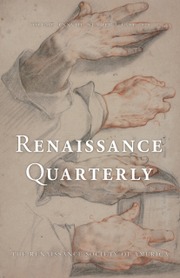Lady Katherine Ranelagh (née Boyle) was born in Ireland in 1615, twelve years before her brother, Robert Boyle, the so-called father of chemistry. In her carefully crafted and engaging book, Michelle DiMeo consolidates and extends what we know of Katherine beyond her status as Boyle’s sister. Lady Ranelagh did not commit anything to print; nor, it seems, did she arrange for the safekeeping of papers after her death, so there are no personal records, such as the copies of outgoing letters, diaries, wish lists, and unpublished drafts left by many contemporaries. Nevertheless, important letters from Katherine are extant, such as those to her brother Richard, Earl of Burlington; these reflect the disintegrating relationship with her morose husband, Arthur Jones (later the second Viscount Ranelagh)—a marriage that ended by settlement in 1666. Moreover, letters and comments from a galaxy of notable correspondents, including Edward Hyde, Kenelm Digby, John Milton, Henry Oldenburg, William Petty, and Benjamin Worsley, reveal Katherine’s active participation in political and intellectual networks. In particular, her views on toleration in religious matters and “liberty of conscience” shine through as strongly held and sometimes complex (127, 173).
Katherine developed a reputation as an astute, knowledgeable, and pious woman of high social rank before her brother made an impact in scientific circles, especially in the Royal Society from 1660. Michael Hunter has observed that in 1649 there was a shift of focus from morals to science in Boyle’s work diaries. DiMeo emphasizes the influence of his sister in both these phases: she encouraged Boyle’s early manuscript tract, “The Dayly Reflection” (ca. 1646), and his published works such as Seraphic Love (1659) and Occasional Reflections (1665). But Katherine also supported his new empirical and theoretical scientific inquiries. From the early 1640s she belonged to the self-selecting group of people who corresponded with Samuel Hartlib, the German-born London intelligencer; and she brought Boyle into this network. DiMeo reports at least two hundred mentions of Lady Ranelagh (also “Ranalaugh”) in Hartlib’s papers, now available online (45–46).
Katherine was sympathetic to the ideas of core members of this circle—Hartlib, John Dury, and Benjamin Worsley—who regarded advances in science, together with religious, educational, and social reform, as both a sign and precondition of an imminent millennium. During the plague in London (ca. 1665–66), she balanced the view that it was a divine punishment with her duty to apply her own well-respected medical recipes (i.e., prescriptions) and remedies. She sometimes exhibited a fine-grained providentialism that affected her assessments. DiMeo cites a striking comment from a note on “Recipes For Stone” (in Hartlib’s hand) of 13 March 1658. One section, attributed to Katherine, reports on a patient cured of the stone “by the constant taking of the distilled water” of lake weeds. Katherine remarks: “And who know’s [sic] but God may have chosen some such base thing to doe that which all your great præscriptions have not beene able to effect” (76). This notion that God might prefer simple as opposed to complex recipes could act as a disincentive to experimentation—surely an unwanted outcome.
In 1668, Boyle moved into Katherine’s house in Pall Mall, London, where they both lived until their deaths in late 1691. The conditions were now perfect for conversation and collaboration between them; but the letters that previously documented their exchanges immediately ceased, and anything that Kathrine recorded is now unavailable. Hence, although she clearly admired and facilitated Boyle’s work, the details of her involvement are beyond our reach. For example, although she deployed the “query genre” (58, 67) in political and theological contentions, did she endorse a version of this tool in empirical medico-scientific matters, as illustrated in the “Inquiries” initiated by Boyle and the Royal Society? Was she attracted to the causal accounts of medical and chemical treatments offered by Boyle’s corpuscularian hypotheses? Did Katherine’s close association with her brother encourage her to identify as a natural philosopher, or did she prefer Naturalist, a label Boyle once suggested for himself? Even after DiMeo’s welcome scrutiny of surviving sources, such questions may not receive definitive answers unless some of Lady Ranelagh’s papers turn up in an attic—as Hartlib’s did in 1933.



